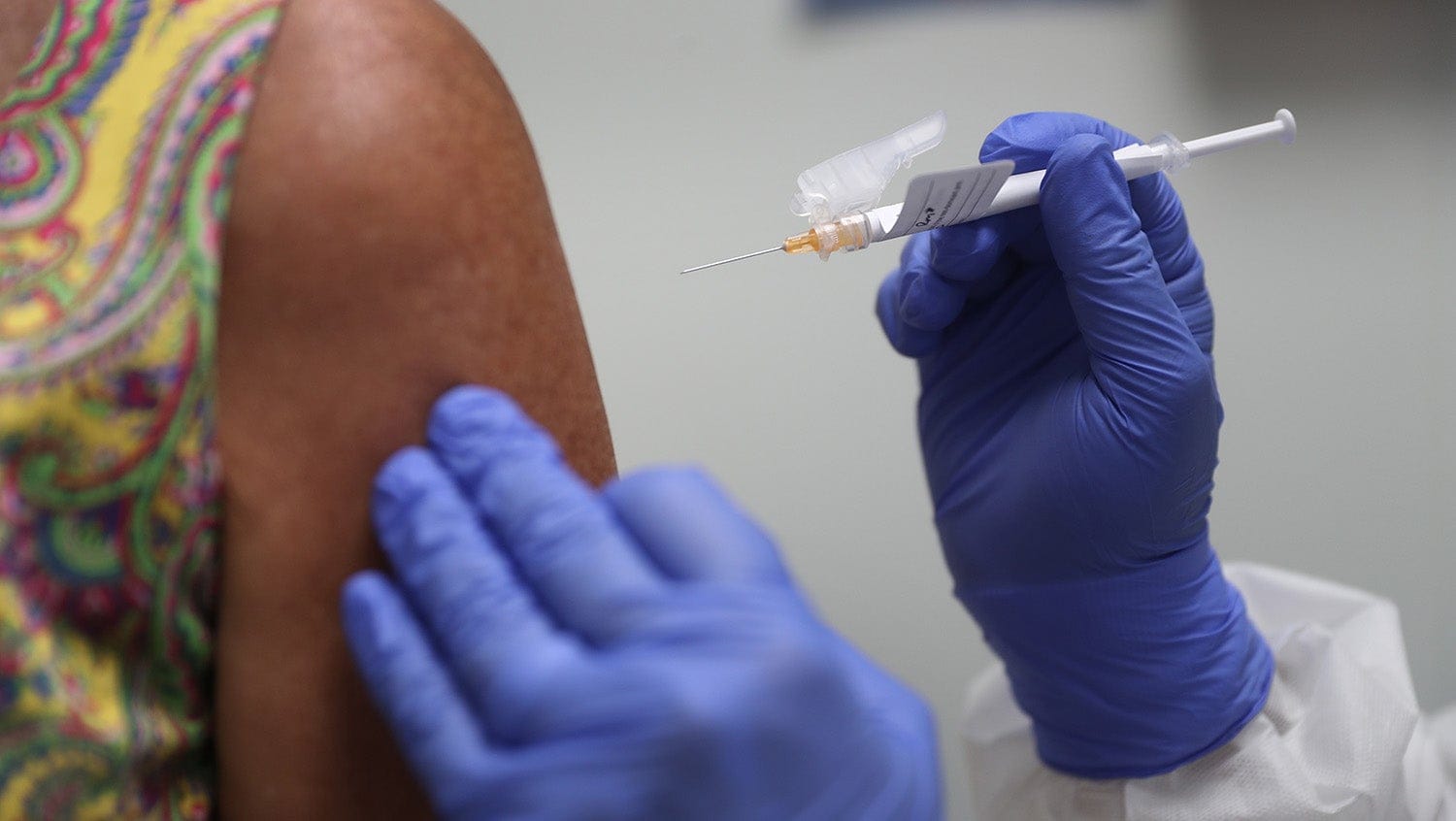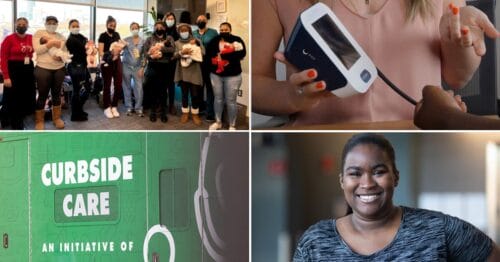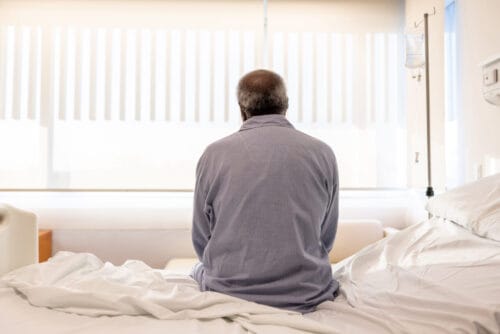
Joe Raedle, Getty Photos
The toll of COVID-19 on people of color shows how crucial it is to overcome obstacles to inclusion in medical research. A new focus on telehealth is one path.
As the global pandemic disproportionately impacted people of color and marchers took to the streets to protest systemic racism in 2020, the intersection of racism and health fell squarely in intensive care units in the United States. During the first surge of COVID-19, Boston Medical Center’s Infectious Diseases team quickly realized their sickest patients were majority Latinx and Black. Yet, emergency-approved treatments like remdesivir exposed a serious flaw: a lack of study participants of color in early clinical trials.
The lack of representation in data is not surprising to infectious diseases researcher Nina Lin, MD, who leads inpatient clinical trials at Boston Medical Center (BMC). The inclusion of people of color in biomedical studies has long been steeped in inequities and controversy. But the absence of diverse populations in research directly leads to disparities in health outcomes.
“One example is with HIV research, which has long struggled to have equal representation of minority populations and women. Current first-line therapy for HIV infection, integrase inhibitors, seems to be having some unexpected side effects such as weight gain and metabolic disorders,” says Lin. “Observational data suggests this is mostly happening in Black and Latinx women—who are underrepresented in all the clinical trials, and therefore these side effects were not clearly evident.”
The COVID-19 pandemic has spotlighted health inequities at a pace and scale never before seen. In the fall of 2020, Boston officials assembled a COVID-19 Health Inequities Task Force to better track data and inform care for Black, Indigenous, and other people of color affected by the pandemic. At BMC, where early data indicated that as much as 78% of the hospital’s COVID-19-positive patients were Black or Latinx, physician-researchers are partnering with their patients to bring promising clinical trials to the bedside.
“There has been a real movement to be more cognizant of and prioritize inclusivity in our research. We’ve been motivated to ensure our patients could equally access trials and emergency access programs,” Lin stresses.
Obstacles to inclusive clinical trials for COVID-19 and beyond
The work has not been without its challenges. With COVID-19 wards closed to all but essential staff to reduce the spread of infection, researchers have relied on nursing colleagues to connect them with eligible patients.
When patients are non-English speaking, interpreters would join the conversation in a three-way call, usually via the patient’s cell phone or through an iPad. Lin notes these measures were taken for very ill patients and likely on high-flow oxygen.
Beyond communication barriers, culturally, clinical studies can be taboo. Physicians focus on introducing knowledge of the U.S. medical system—for example, explaining the Food and Drug Administration’s role. Another level of complexity is ensuring patients understand the concept of a double-blinded study design. It can be tricky to make it clear that, even if a patient consents to be in the study, he or she may not get the experimental treatment and instead be randomized to the placebo group. Physicians spend extra time on education and meeting patients where they are, but it is critically important that patients understand what they are agreeing to and consent to enrolling in a trial.
Lin gives a template for how she explained the COVID-19 clinical trial to potential participants:
“When I explain that the clinical trial I am offering is not known yet to work for treatment of COVID infection, I often say, ‘This is how I would think of it: This medication may help you. You may recover without it, but you could become sicker, where intubation would become the only option. Since it is not known yet what is the best treatment for this new infection, we have to keep studying different options in trials like this one. It’s essential to offer these treatments to these patients, even if they ultimately choose not to enroll.’”
How telehealth could change research post-pandemic
Just as telehealth has vastly evolved during the pandemic, Lin believes so will the approach to research. Even with mass vaccination efforts, COVID-19 is, unfortunately, here to stay, and studies for effective treatment strategies will continue. Hospitals will need to invest in research infrastructure that can facilitate remote conversations between physician-researchers and patients—with a particular focus on non-English speakers and low medical literacy.
Lin envisions more iPads that allow multi-person Zoom meetings with easier and clearer access to translators and floors with better Wi-Fi service. Hospitals will also have to expand written translation for pharmaceutical health education materials, which traditionally only come in English, Spanish, and Haitian Creole. These investments are necessary to help achieve health equity.
And the work pays off. Lin enrolled majority non-English speakers in her Roche/Gilead COVID-19 inpatient clinical trial.
“We are positioned to really contribute to the understanding of why people in these populations are sicker, whether it is exposure or host genetics, and we are well-positioned to make sure that clinical trials are representative of who’s getting infected in this country,” she concludes.


